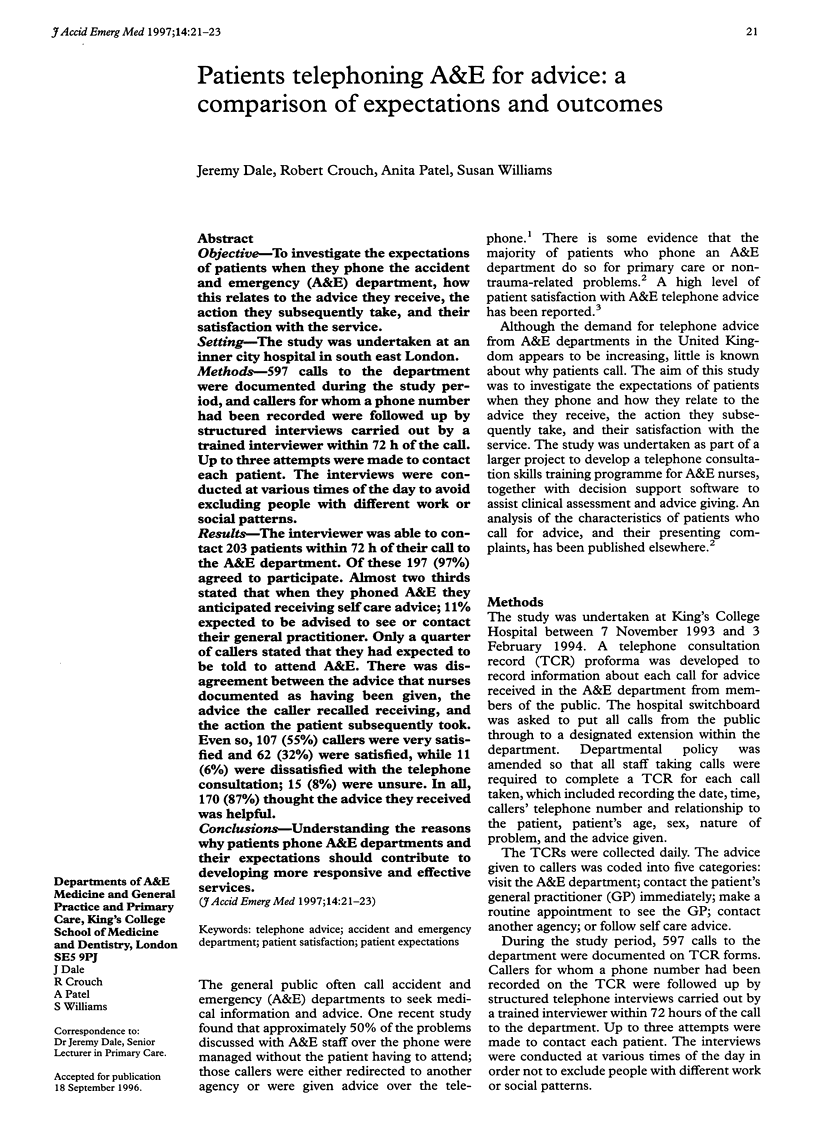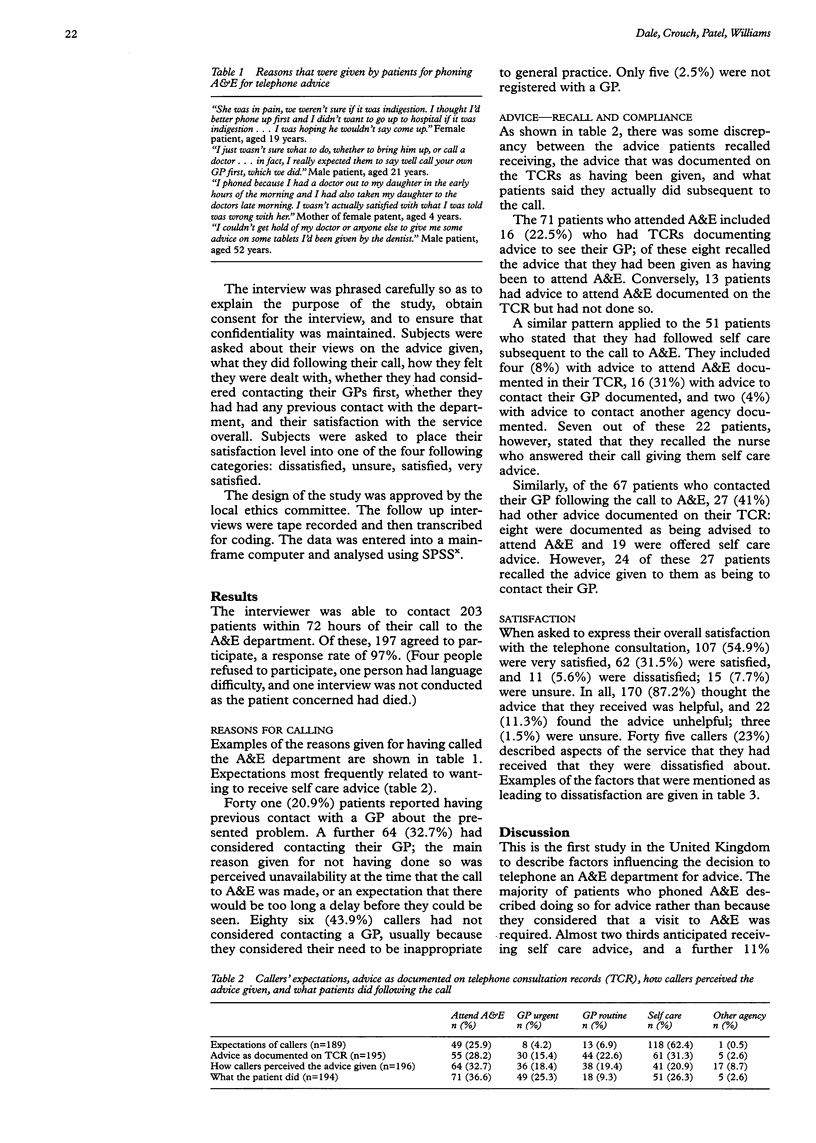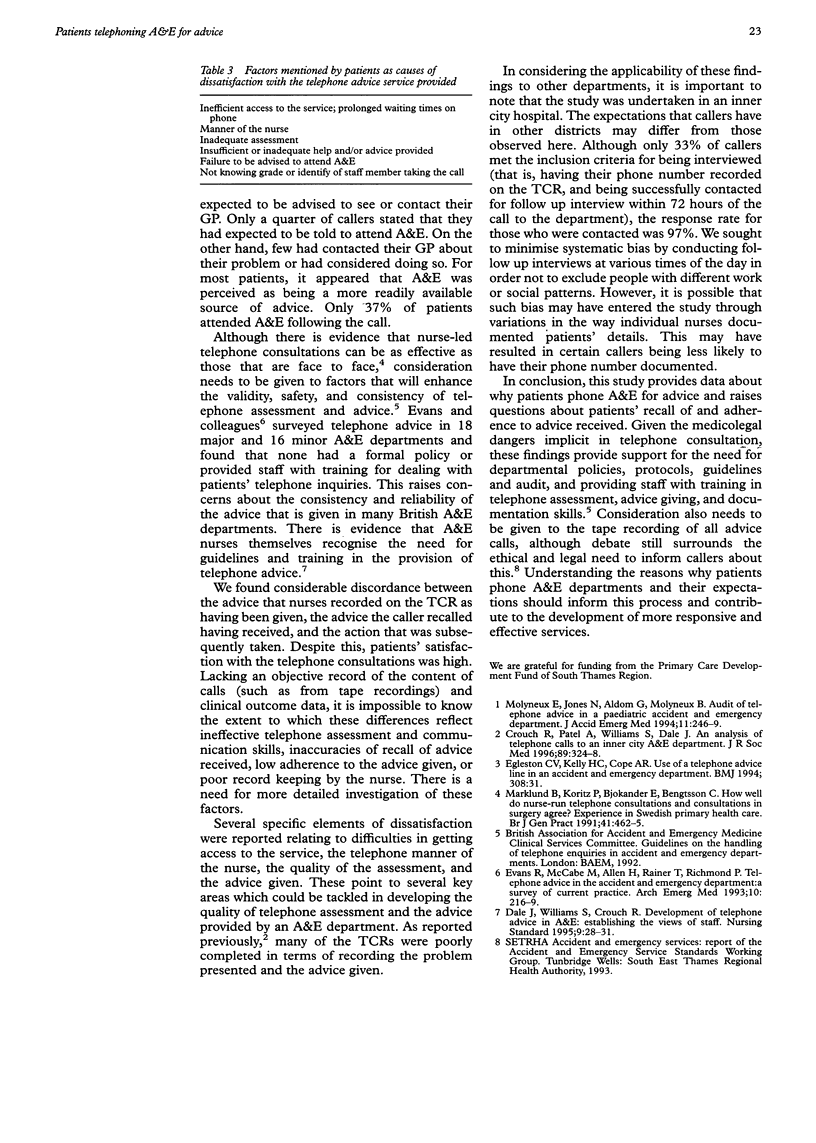Abstract
OBJECTIVE: To investigate the expectations of patients when they phone the accident and emergency (A&E) department, how this relates to the advice they receive, the action they subsequently take, and their satisfaction with the service. SETTING: The study was undertaken at an inner city hospital in south east London. METHODS: 597 calls to the department were documented during the study period, and callers for whom a phone number had been recorded were followed up by structured interviews carried out by a trained interviewer within 72 h of the call. Up to three attempts were made to contact each patient. The interviews were conducted at various times of the day to avoid excluding people with different work or social patterns. RESULTS: The interviewer was able to contact 203 patients within 72 h of their call to the A&E department. Of these 197 (97%) agreed to participate. Almost two thirds stated that when they phoned A&E they anticipated receiving self care advice; 11% expected to be advised to see or contact their general practitioner. Only a quarter of callers stated that they had expected to be told to attend A&E. There was disagreement between the advice that nurses documented as having been given, the advice the caller recalled receiving, and the action the patient subsequently took. Even so, 107 (55%) callers were very satisfied and 62 (32%) were satisfied, while 11 (6%) were dissatisfied with the telephone consultation; 15 (8%) were unsure. In all, 170 (87%) thought the advice they received was helpful. CONCLUSIONS: Understanding the reasons why patients phone A&E departments and their expectations should contribute to developing more responsive and effective services.
Full text
PDF


Selected References
These references are in PubMed. This may not be the complete list of references from this article.
- Crouch R., Patel A., Williams S., Dale J. An analysis of telephone calls to an inner-city accident and emergency department. J R Soc Med. 1996 Jun;89(6):324–328. doi: 10.1177/014107689608900606. [DOI] [PMC free article] [PubMed] [Google Scholar]
- Dale J., Williams S., Crouch R. Development of telephone advice in A&E: establishing the views of staff. Nurs Stand. 1995 Feb 15;9(21):28–31. doi: 10.7748/ns.9.21.28.s37. [DOI] [PubMed] [Google Scholar]
- Egleston C. V., Kelly H. C., Cope A. R. Use of a telephone advice line in an accident and emergency department. BMJ. 1994 Jan 1;308(6920):31–31. doi: 10.1136/bmj.308.6920.31. [DOI] [PMC free article] [PubMed] [Google Scholar]
- Evans R. J., McCabe M., Allen H., Rainer T., Richmond P. W. Telephone advice in the accident and emergency department: a survey of current practice. Arch Emerg Med. 1993 Sep;10(3):216–219. doi: 10.1136/emj.10.3.216. [DOI] [PMC free article] [PubMed] [Google Scholar]
- Marklund B., Koritz P., Bjorkander E., Bengtsson C. How well do nurse-run telephone consultations and consultations in the surgery agree? Experience in Swedish primary health care. Br J Gen Pract. 1991 Nov;41(352):462–465. [PMC free article] [PubMed] [Google Scholar]
- Molyneux E., Jones N., Aldom G., Molyneux B. Audit of telephone advice in a paediatric accident and emergency department. J Accid Emerg Med. 1994 Dec;11(4):246–249. doi: 10.1136/emj.11.4.246. [DOI] [PMC free article] [PubMed] [Google Scholar]


